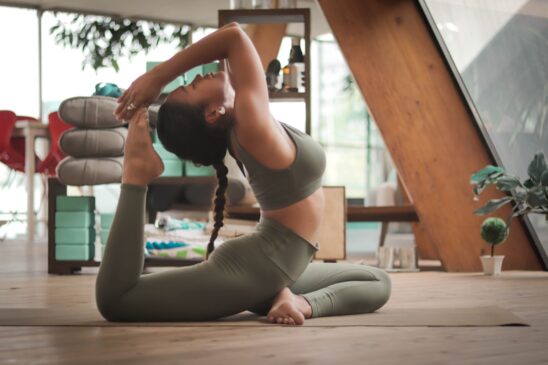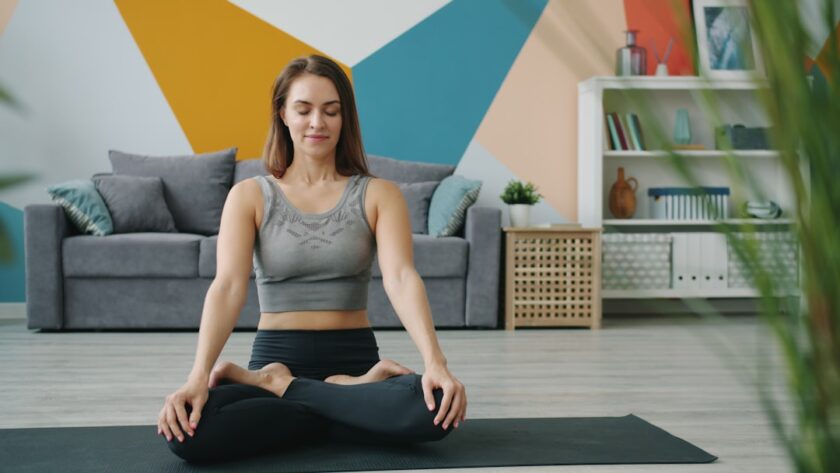Your Ultimate Guide to Practicing Yoga
Yoga is more than just a form of exercise; it’s a holistic practice that combines physical postures, breathing techniques, and meditation. Whether you’re looking to enhance your flexibility, relieve stress, or promote overall well-being, yoga offers numerous benefits for both your body and mind. This comprehensive guide will walk you through everything you need to know about practicing yoga effectively.
What is Yoga?
Originating from ancient India, yoga encompasses a wide range of practices aimed at creating harmony between the mind, body, and spirit. The word “yoga” comes from the Sanskrit word “yuj,” which means to unite or join.
The Benefits of Yoga
Practicing yoga can significantly improve your physical and mental health. Here are some of the key benefits:
- Enhanced Flexibility: Regular practice can increase flexibility and range of motion.
- Improved Strength: Many yoga poses build strength, especially in the core muscles.
- Stress Relief: Yoga incorporates breathing exercises and meditation, which help reduce stress.
- Better Posture: Yoga promotes body awareness and correct alignment.
- Increased Focus and Concentration: Regular practice improves mental clarity.
- Enhanced Awareness and Mindfulness: Yoga helps you connect with your inner self.
Getting Started with Yoga
If you’re a beginner, here’s how to start your yoga practice:
Find the Right Style
There are various styles of yoga, each with unique characteristics:
- Hatha Yoga: A gentle introduction to the most basic yoga poses.
- Vinyasa Yoga: A flow of postures synchronized with breath.
- Ashtanga Yoga: A rigorous style that follows a specific sequence of postures and is physically demanding.
- Yin Yoga: A slow-paced style with postures held for longer periods, promoting deeper tissue release.
- Bikram Yoga: A series of 26 challenging poses practiced in a heated room.
Set Up Your Practice Space
Creating a conducive space for your yoga practice is essential. Here’s what you need:
- A Mat: A good-quality yoga mat that provides traction and cushioning.
- Comfortable Clothing: Wear breathable and flexible clothing that allows movement.
- Calm Environment: Choose a quiet space where you can focus without distractions.
- Essential Tools: Consider using props such as blocks, straps, or blankets to assist you.
Learn Basic Poses
Familiarize yourself with these foundational yoga poses:
- Mountain Pose (Tadasana): A standing pose that promotes good posture.
- Downward Facing Dog (Adho Mukha Svanasana): A common pose that stretches the entire body.
- Warrior I (Virabhadrasana I): Encourages strength and stability.
- Child’s Pose (Balasana): A resting posture that provides gentle stretch and relaxation.
- Cat-Cow Stretch (Marjaryasana-Bitilasana): Increases spinal flexibility and alleviates back tension.
Establishing a Routine
Having a consistent practice is crucial for reaping the benefits of yoga. Here are practical tips to help you establish a routine:
- Schedule Your Practice: Set aside specific times in your week dedicated to practicing yoga.
- Start Small: Begin with shorter sessions (15-30 minutes) and gradually increase the duration.
- Stay Flexible: Listen to your body and adjust your practice based on how you feel.
- Incorporate Meditation: Start or end your practice with a few minutes of meditation or deep breathing.
Tips for Practicing Yoga Safely
Safety is a crucial aspect of practicing yoga. Here are key points to remember:
- Warm-Up: Always warm up your body before engaging in more intense poses.
- Avoid Pain: If you feel pain, back off or skip the pose. Yoga should be about stretching, not straining.
- Consult a Professional: Consider taking classes with certified instructors, especially as a beginner.
- Stay Hydrated: Drink water before and after your practice to stay hydrated, especially in heated classes.
Exploring Advanced Yoga Practices
Once you feel comfortable with basic poses, you might want to explore deeper practices:
Incorporating Pranayama
Pranayama is the practice of controlling breath. Here are a few techniques to try:
- Nadi Shodhana (Alternate Nostril Breathing): Balances the two hemispheres of the brain.
- Ujjayi Breath: Often used in Vinyasa, it involves a slight constriction of the throat.
Practicing Meditation
Integrating meditation into your practice can improve focus and mindfulness. Start with simple techniques like:
- Mindfulness Meditation: Focus on your breath and observe your thoughts without judgment.
- Guided Meditation: Utilize apps or online resources to guide your practice.
Joining a Community
Joining a yoga community can enhance your experience. Try the following:
- Attend Classes: Local studios or online classes can provide structure and motivation.
- Participate in Workshops: Deepen your practice and knowledge through workshops.
- Engage with Online Forums: Connect with other yogis on platforms like social media.
Conclusion
Yoga is a powerful practice that can enhance your physical, mental, and emotional well-being. By understanding the fundamentals, establishing a routine, and approaching your practice safely, you can harness the full benefits that yoga offers. Remember, yoga is a personal journey. Progress at your own pace, and most importantly, enjoy the practice. Namaste!



